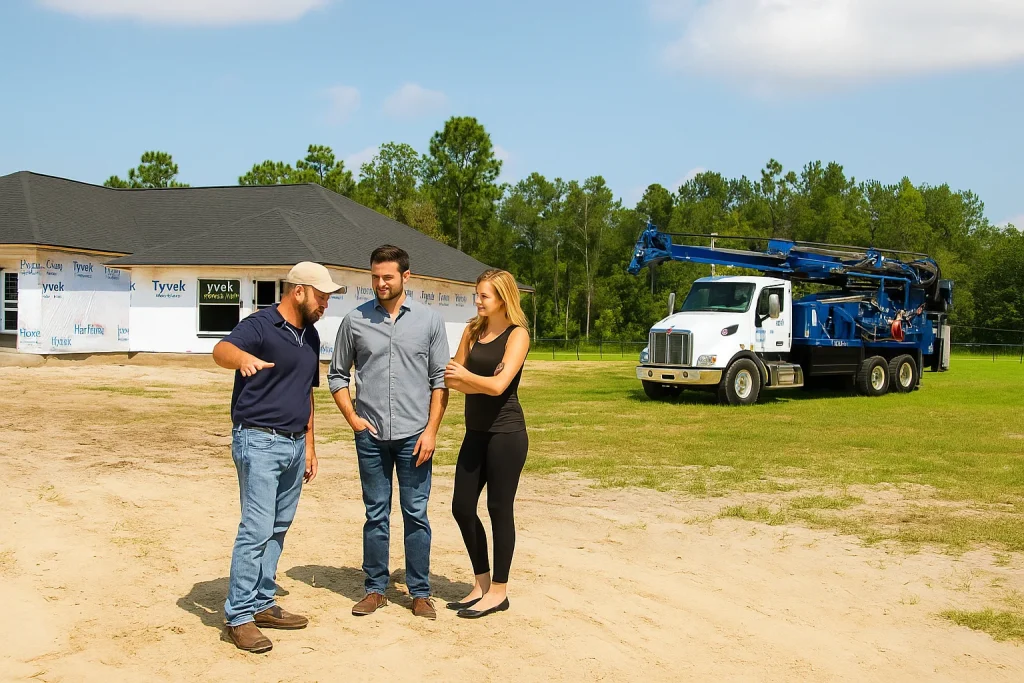If you live in Florida, you’ve likely noticed that the ground beneath your feet is different from most other states: sandy, loose, and quick to drain after a rainstorm. While this soil type is great for avoiding floods and puddles, it plays a major role in determining how deep your water well should go and what kind of water quality you can expect. For homeowners considering professional well drilling in Florida, understanding this connection can save you money, protect your health, and ensure a reliable water supply for years to come.

Sandy Soil & Water Table Depth
Florida’s sandy soil doesn’t hold water well, it allows rain to seep quickly down to the water table. Depending on where you live in the state, that table might be just a few feet below the surface or more than a hundred feet deep. In coastal areas and parts of Central Florida, for instance, the water table is often quite shallow. In higher inland regions, wells may need to go deeper to reach stable aquifers.
When you hire a professional well drilling company like ours, we’ll assess local geology, the depth of nearby wells, and soil composition to determine the ideal drilling depth. Going too shallow could lead to contamination from surface runoff, while drilling unnecessarily deep can increase costs without improving water quality.
The Impact on Water Quality
Because sandy soil allows water, and anything in it, to move quickly downward, contaminants like fertilizers, pesticides, and septic runoff can more easily reach shallow groundwater. That’s why deeper wells in Florida tend to have cleaner, more consistent water. The deeper layers of the aquifer are often protected by clay or limestone layers that act as natural filters.
A reputable well driller will perform a water test after installation to ensure your water meets safety standards. It’s also a good idea to test your well water annually for bacteria, nitrates, and other common contaminants. Regular maintenance and filtration can help offset any risks associated with Florida’s fast-draining soil.
Choosing the Right Well Type
Florida homeowners generally have two main options: shallow wells and deep wells.
- Shallow wells (less than 50 feet deep) are cheaper to install but more vulnerable to contamination and drought conditions. They’re best suited for irrigation or outdoor use.
- Deep wells (over 100 feet) tap into the Floridan Aquifer, which supplies cleaner and more reliable drinking water. Though costlier upfront, deep wells often provide better long-term value.
A professional well driller can evaluate your property and recommend which type best fits your needs and budget.
Professional Drilling Pays Off
Well drilling in Florida isn’t a DIY project. Licensed contractors use specialized equipment to navigate the state’s mix of sand, clay, and limestone. They also handle required permits and ensure compliance with Florida Department of Environmental Protection (DEP) and your municipal regulations. Choosing an experienced professional helps prevent problems like well collapse, pump failure, or contamination—issues that can cost thousands to fix later.
Florida’s sandy soil demands careful planning when it comes to well depth and water quality. By working with a qualified well drilling professional and understanding how local soil affects groundwater, you can ensure a safe, sustainable water source that serves your home for decades.
Schedule an appointment with A&B Well Drilling & Pump Service. We make well water work for you!
